類題
<解答>
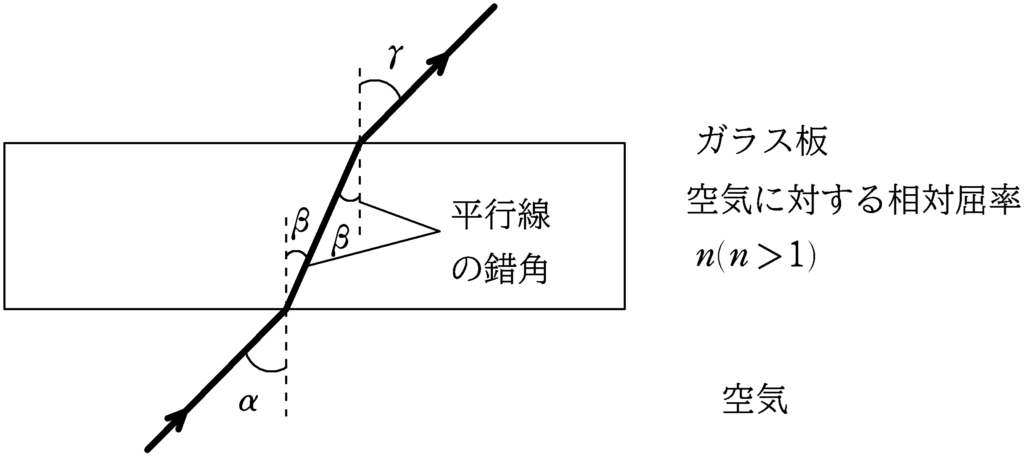
まず,空気から空気に対する屈折率$n\,(>1)$のガラス板に入射した上図において
$\alpha=\gamma>\beta$
が成り立つ.このことを示しておく.
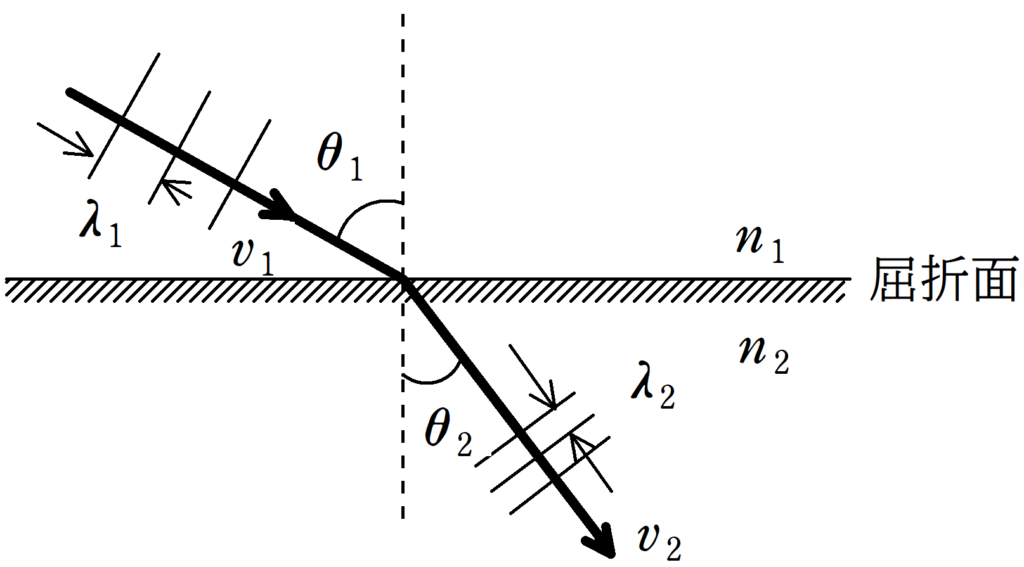
速さ$v_{1}$,波長$\lambda_{1}$の波が入射角$\theta_{1}$で屈折面に入射し,その後屈折角が$\theta_{2}$,速さ$v_{2}$,波長が$\lambda_{2}$となった.入射側の媒質の屈折率を$n_{1}$,屈折する側の媒質の屈折率を$n_{2}$とすると,次の関係が成り立つ.
$\dfrac{v_{1}}{v_{2}}=\dfrac{\sin\theta_{1}}{\sin\theta_{2}}$
また,屈折により,媒質の振動数$f$および周期$T$は変化しないことから,次のことが成り立つ.
$\dfrac{v_{1}}{v_{2}}=\dfrac{\cancel{f}\lambda_{1}}{\cancel{f}\lambda_{2}}=\dfrac{\lambda_{1}}{\lambda_{2}}$
一方,屈折率との関係は次のようになる.
$n_{1}\sin\theta_{1}=n_{2}\sin\theta_{2}$
$n_{1}v_{1}=n_{2}v_{2}$
$n_{1}\lambda_{1}=n_{2}\lambda_{2}$
最後に,$n_{12}=\dfrac{n_{2}}{n_{1}}$を屈折率$n_{1}$の媒質に対する屈折率$n_{2}$の媒質の相対屈折率という.
屈折の法則より
$1\times \sin\alpha=n\sin\beta \cdots (\ast)$ かつ $n\sin\beta=1\times \sin\gamma \cdots (2\ast)$
$(\ast),(2\ast)$より,$\sin\alpha=\sin\gamma$だから,$\alpha=\gamma$.また,$(\ast)$より,$\sin\beta=\dfrac{\sin\alpha}{n}$であり,$n>1$より,$\sin\beta<\sin\alpha$だから,$\beta<\alpha$
以上より,
$\alpha=\gamma>\beta$
これをもとに図をかくと下のようになる.
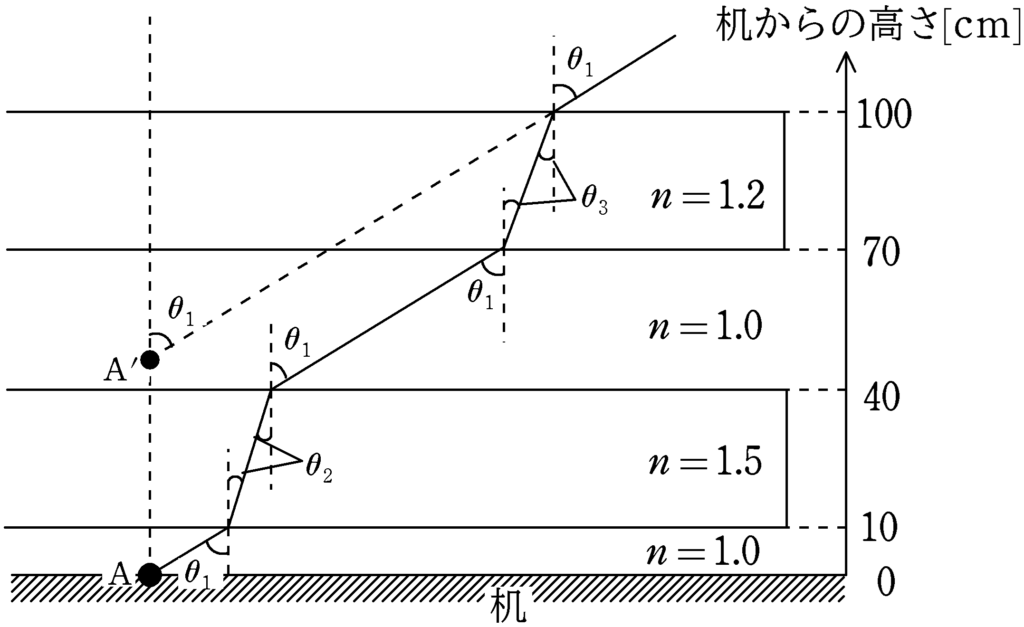
空気とガラス板$(n=1.5)$との間での屈折の法則より
$1.0\times \sin\theta_{1}=1.5\times \sin\theta_{2}$
ただし,問題文にかかれているように,真上から見ているため,$\theta_{1},\theta_{2},\theta_{3}$は非常に小さく,
$\theta_{1}\fallingdotseq \tan\theta_{1}\fallingdotseq \theta_{1}$,$\theta_{2}\fallingdotseq \tan\theta_{2}\fallingdotseq \theta_{2}$
と近似できるから,屈折の法則は
$\theta_{1}=1.5\theta_{2}$ $\,\,\therefore\,\,\theta_{2}=\dfrac{\theta_{1}}{1.5} \cdots (3\ast) $
と近似できる.
同様に,空気とガラス板$(n=1.2)$との間での屈折の法則より
$1.0\times \sin\theta_{1}=1.2\times \sin\theta_{3}$
同じように近似して
$\theta_{1}=1.2\theta_{3}$ $\,\,\therefore\,\,\theta_{3}=\dfrac{\theta_{1}}{1.2} \cdots (4\ast) $
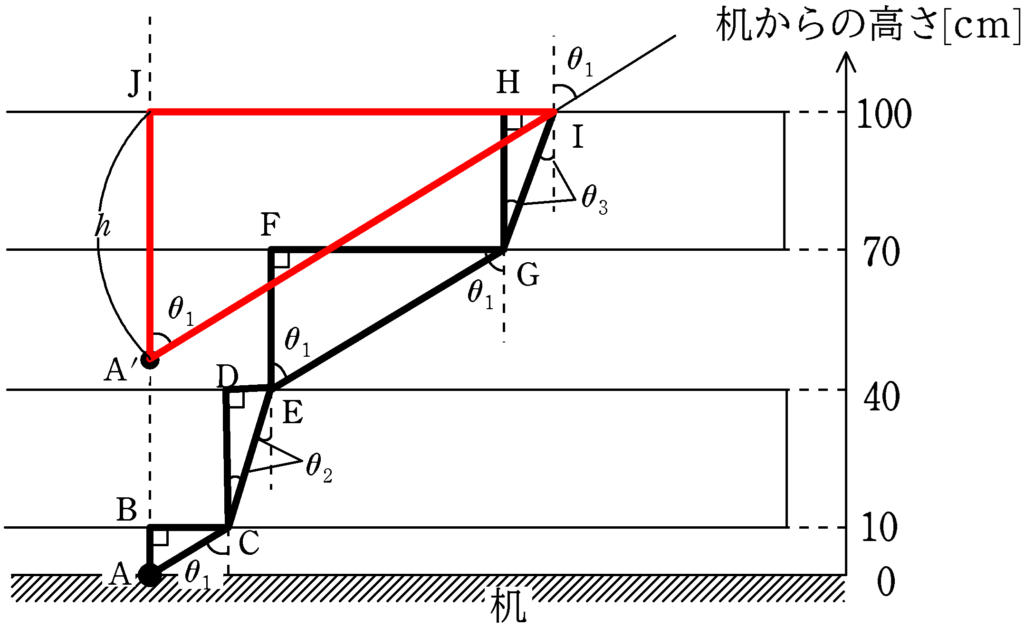
次に,Aにある物体(絵)のみかけの深さを$h$として,$\rm JH$の長さを2通りで表わす.上図の赤い直角三角形に着目すると
${\rm JH}=h\tan\theta_{1}\fallingdotseq h\theta_{1}$ $\cdots (5\ast)$
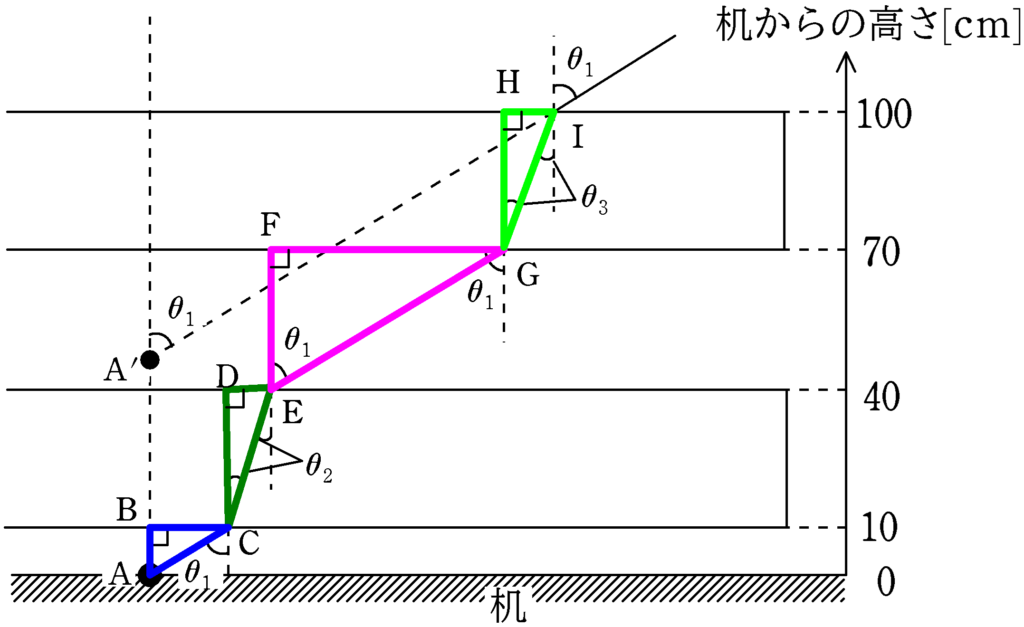
$\rm JH=BC+DE+FG+HI$でもある.${\rm AB}=10\,\rm cm$,$\rm CD=30\,\rm cm$,$\rm EF=30\,cm$,$\rm GH=30\,cm$なので,上の青色,緑色,ピンク,黄緑の4つの直角三角形に着目して
$\eqalign{{\rm JH}&={\rm BC+DE+FG+HI}\\&=10\tan\theta_{1}+30\tan\theta_{2}+30\tan\theta_{1}+30\tan\theta_{3}\\&\fallingdotseq 10\theta_{1}+30\theta_{2}+30\theta_{1}+30\theta_{3}\\&=40\theta_{1}+30\theta_{2}+30\theta_{3}}$
$(3\ast),(4\ast)$を用いて,${\rm JH}$を$\theta_{1}$のみにすると
${\rm JH}=40\theta_{1}+30\times \dfrac{\theta_{1}}{1.5}+30\times \dfrac{\theta_{1}}{1.2}=85\theta_{1} \cdots (6\ast)$
$(5\ast),(6\ast)$より
$h\theta_{1}=85\theta_{1}$ $h=85\,\rm cm$
したがって,床からの高さは$100-85=15\,\rm cm$(③)(答)

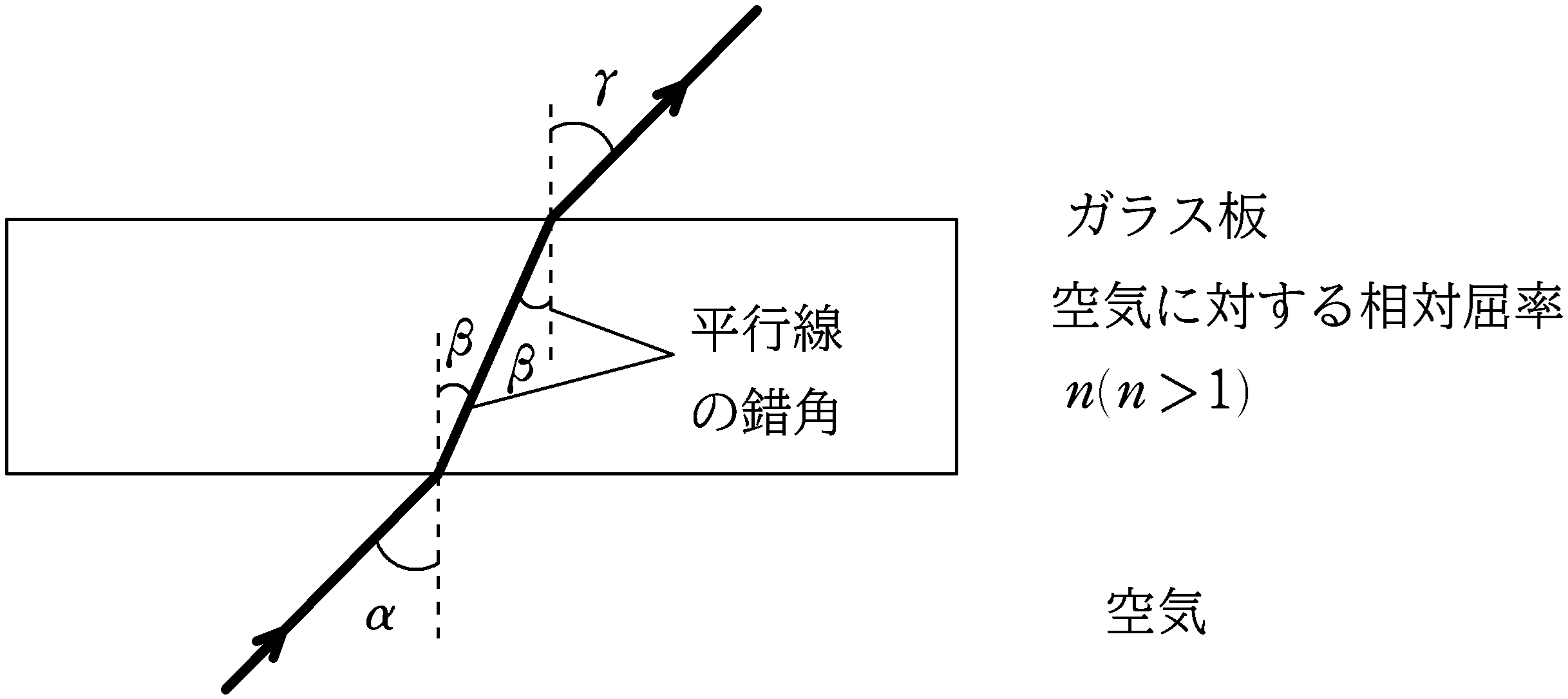




コメント